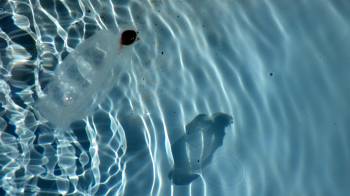Conservation & Threats

|
|
|
Adult Pegea confoederata swimming
(photo by Helen Twaddle, Heron Island)
|
As salps are part of the pelagic macroplankton group, and their lifecycles are so short, threats to these creatures are relatively minimal. However, it has been suggested that salps could be an important species in the transfer of carbons from the upper ocean to the ocean floor through their dense faecal matters' vertical flux (Caron et al. 1989). Faecal pellets in larger salps (such as Pegea confoederata) are generally >1 mm in length and sink rapidly to the ocean floor. To compare, other major planktonic species produce much smaller faecal pellets that have been found to decompose within a few hours with the help of bacteria. Salp faecal pellets play a larger role in the vertical flux of organic matter, as their faeces is not degraded as quickly by bacteria, and therefore have a larger chance of reaching the ocean floor (Caron et al. 1989). Because of this, it is important to monitor salp species to guarantee their continued survival.
|